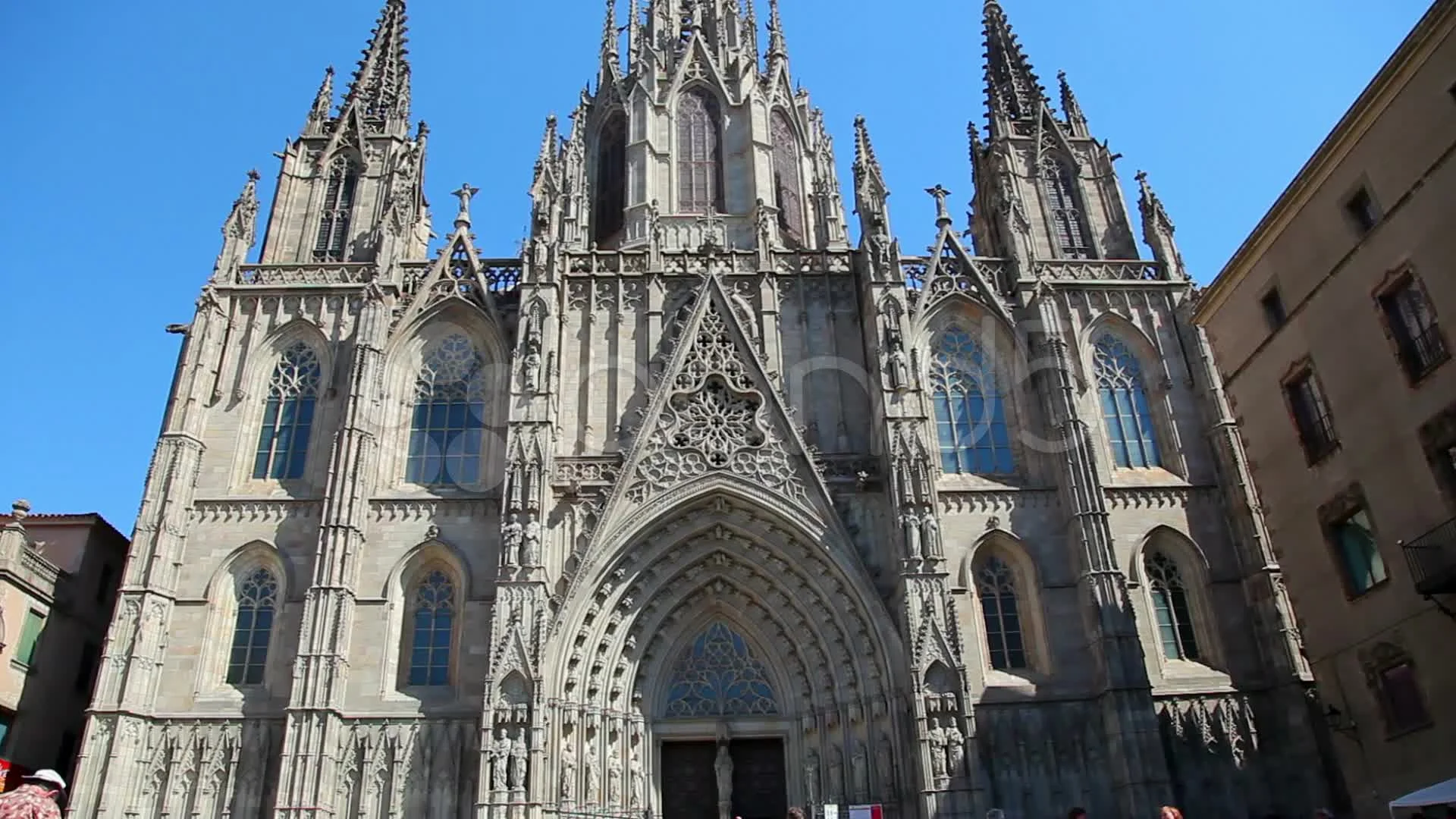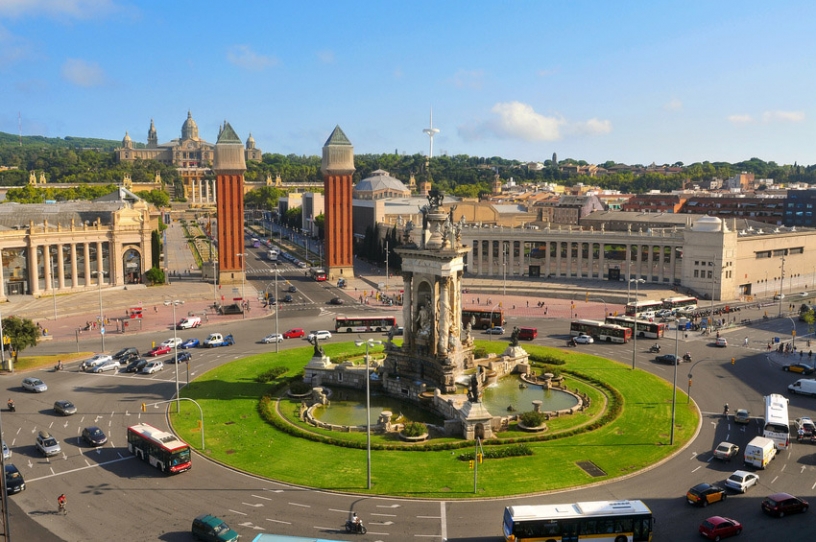Barcelona is Spain's second largest city, in population, with around 3,200,000 people. This innovative, diverse city is located on the northeast coast of the peninsula along the Mediterranean Sea. Barcelona is the capital of the Catalonian region, as well as the province of Barcelona. Although Spanish is the official language in Spain, in the Catalonian region, Catalan is also recognized as the co-official language.

The weather is typically decent year-round, with the nicest months being May until July, as well as September, generally. Like many Spanish cities, August tends to be the hottest month, with temperatures soaring into the mid 30s at times. The winters are cooler, but there is not much precipitation. Barcelona is ranked just after Madrid as the country's main source of economy. It is also home to one of the most major Mediterranean ports. Barcelona's airport is the second largest in Spain, as well. Barcelona was known for its manufacturing industry, and that is still prevalent today as some of the most important industries are textiles, chemistry, motor and electronics. As for the service market, the leaders are logistics, publishing, and telecommunications. Many tourists are drawn to the city because of its rich culture and it is very easy find cheap flights to Barcelona from all bigger European cities and most capitals worldwide. There is also the draw that it is situated 160 km south of the Pyrenees and the French-Spanish border, plus, Barcelona revels in its 4.5 km of coastline, with seven beaches. It was the home to several impressive works done by the world renowned architects, Antoni Gaud and Lluis Domenech i Montaner. The city also has a wide range of parks, several walking streets in the old part of the city, and numerous attractions to visit.

1. Barcelona Cathedral

The façade of Barcelona’s largest Gothic masterpiece was recently restored. It now gleams in the sunshine, overlooking Plaça de la Seu, the square that shares the Cathedral’s name. Take a walk around its perimeter and look out for the gargoyles that leer down at you like illustrations from an H.P. Lovecraft story, or admire the tall spires. The cathedral’s interior is every bit as magnificent as you would expect, with a large principal altar and lateral altars dedicated to significant Saints. Its reverential ambience is accentuated by high ceilings, low lighting and musky incense that burns in ornate cast iron thuribles. Barcelona Cathedral is free to visit during certain hours, and a donation is requested at other times. The Cathedral of Santa Eulalia (also called La Seu) the Gothic cathedral seat of the Archbishop of Barcelona, Spain. The famous Sagrada Família currently being built is not a cathedral. The cathedral was constructed from the 13th to the 15th century. There was a Visigothic church there before. The Gothic-like façade is from the 19th century. The cathedral is dedicated to Eulalia of Barcelona, co-patron saint of Barcelona. According to Catholic tradition, Eulalia was a young virgin who suffered martyrdom during Roman times in Barcelona. The body of Saint Eulalia is entombed in the cathedral's crypt. One side chapel is dedicated to "Christ of Lepanto", and contains a cross from a ship that fought at the Battle of Lepanto (1571). The body of the cross is shifted to the right. Catalan legend says that the body swerved to avoid getting hit by a cannonball. The cathedral has a secluded Gothic cloister where thirteen white geese are kept (it is said that Eulalia was 13 when she was murdered).
2. Plaça Espanya

As you step out of the metro, don’t be alarmed by the many lanes of cars that zip around the monument that stands in its centre. Turn your back to the traffic and admire the Palau Nacional building, home to Barcelona’s prestigious National Art Museum of Catalonia (MNAC). The fountains which line the boulevard are of course none other than the Magic Fountain of Montjuïc which comes to life with an epic choreography of dancing jets, coloured lighting and a popular music soundtrack. One of Barcelona’s most important squares, Plaça d’Espanya is located at the bottom of Montjuïc hill. It is a junction for many of the city’s largest transport axes including Avenida Parallel, Gran Via de les Corts Catalanes and Carrer de la Creu Coberta. Easily recognizable by its many notable architectural landmarks, it is the second-largest square in Spain, covering a total surface of 34,000 square meters. The Plaça d’Espanya was built ahead of the 1929 Universal Exhibition of Barcelona, an important event that had a significant impact on the city’s urban landscape and general infrastructure, with many works being carried out to accommodate visitors and improve the city’s overall appearance. The plans for the square were designed by Josep Puig i Cadafalch and Guillem Busquets and finalized by Antoni Darder. The main feature of the square is the central fountain designed by Josep Maria Jujol, featuring ornamental statues designed by Miguel Blay and the brothers Miquel and Llucià Oslé. The statues are meant to represent the three main rivers that cross the Iberian peninsula: the Ebro, the Guadalquivir and the Tajo. Above the main body of the fountain are three columns bearing statues representing various figures associated with themes of religion, heroism and art.
3. Park Güell
![27+] Park Güell Wallpapers on WallpaperSafari](https://cdn.wallpapersafari.com/4/47/SPIcN5.jpeg)
If you’re after beautiful places in Barcelona, then Park Güell should definitely be on your list. Not only was it landscaped by Barcelona’s architect extraordinaire Antoni Gaudí (1852-1926), its position on the Turó del Carmel hill guarantees awesome views of Barcelona’s famous skyline and the deep azure Mediterranean. Time your visit with the sunset to add a romantic touch. Parks by their very nature are places where beauty can grow in the flowerbeds, uncurl its leaves and petals, and express a symphony of colour and shape that people try copy in countless ways. Gaudí was especially inspired by the asymmetrical curves and contours of the natural world, which you can recognize in the organic caverns and undulating lines of his. The landmark of the park is a friendly dragon, watching over the entrance of the market hall. You will encounter the dragon when you enter the park through the most beautiful entrance, the main entrance: Coming from the south side, walk from Carrer d'Olot between two turreted pavilions to a staircase. Here the friendly guardian of the park welcomes you. He is also decorated with broken pottery, the so-called Trencadis. The pavilions and the organic shape of the terrace clearly show the signature of Master Gaudí. From the staircase you get to a very unusual room. Consisting of 86 columns, it was originally thought of as a marketplace of the residential area - the original purpose of Park Güell. In 1885 Gaudí's patron, the industrialist Eusebi Güell, acquired the terrain on a mountain ridge, with a fantastic view of Barcelona. In 1890 Güell instructed the architect Antoni Gaudí to build a garden city, in which nature and an equal housing should form a symbiosis. In addition to the Sagrada Familia, this was the largest project of Gaudí. Only two buildings of the 60 villas, the roads and the extensive park were finished. The park was opened in 1922. In 1929, the year of the second World Expo, the park was handed over to public. In 1963, the former residence of Gaudí was opened as a museum. In 1984, the park was included in the UNESCO list of cultural heritage. Gaudí created an enchanted forest with the park. Take some time to be enchanted by Park Güell and discover the many small details.
4. Ciutadella Park
This is one of the largest green spaces in Barcelona, and it’s full of beautiful details. For starters it’s one of the few places with enough lawn to roll around on, spread out a picnic or string a wire to practice tight-rope walking. There is a large boating lake with a vibrant ecosystem of beautiful water plants and ducks. A large golden chariot fountain and waterfall provide the focal point around which the park spreads out, toward the Catalan parliament buildings and the Zoo. The Parc de la Ciutadella is very idyllic and probably the greenest oasis in the megacity of Barcelona. It invites you to relax, to rebound and to go for long walks, as well as for a picnic. You can also use a rowing boat on the lake. On the grounds of the Parc de la Ciutadella, there are several attractions: the zoo, the Catalan Parliament. The Museu d'Art Modern is situated in the building of the parliament. The Zoological Museum and the Museu de Geologia are placed in the area of the park. Therewith, the Bourbon king wanted to put the people under his control. La Ciutadella represented everything that the Catalans hated: the Bourbons and the central government in Madrid. Later, the Citadel was converted into a prison - mostly for political prisoners.In 1714, after the successful war at the time of Felip V., a citadel was placed on this ground. To build this fortress, Felip V. pulled away a considerable part of the quarter Ribera. At the north-western entrance of the Parc de la Cuitadella, at the Passeig de Pujades, one will find a equestrian statue of General Prim, who gave the order for sanding the citadel in 1869. The 1869 warrant for the grinding of Zidadelle existed. In 1998, the World Exhibition was placed here. The park was designed under the command of Josep Fontsère, the young and then unknown architect Antoni Gaudí supported him with the design of the waterfall "Cascada. Gaudí immortalised himself on the fountain, which stands by the lake. The water basin in front of fountain is guarded by winged dragons, a figure quite commonly found in his work. The Parlament de Catalunya can be vistited on the first Friday of the month with a guided tour (in Catalan). Similarly, the building is open to visitors on 11th September (the Catalan national holiday) and 12th September. In the parliament building, the Museu d'Art Modern has got its place.


Comments
Post a Comment